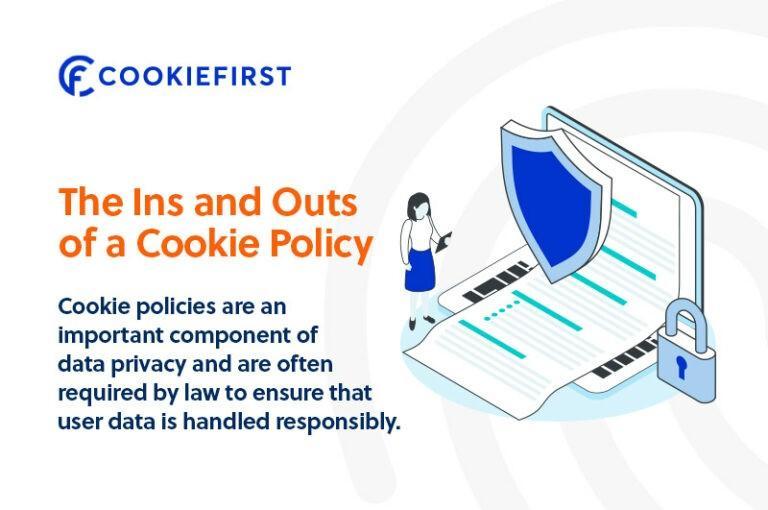Navigating the digital landscape entails understanding the AOL cookie policy, a crucial aspect of your online experience with AOL and the wider Yahoo family of brands. This policy details how cookies and similar technologies enhance functionality, security, and user experience across our various platforms, including Yahoo and Engadget. By explaining personal data usage and the importance of cookies for tasks such as authenticating users and analyzing site interactions, we prioritize transparency in our AOL privacy settings. When you engage with our services, you are given options for consent, enabling you to personalize how your data is utilized for tailored advertising and content. Stay informed and empowered by reviewing both our AOL cookie policy and the overarching AOL privacy policy, ensuring your digital preferences are respected.
Understanding the practices surrounding cookies and user consent is essential for optimizing your online experiences with AOL and its affiliated services. Often referred to as data tracking techniques, these technologies are vital for seamless site navigation and enhanced security measures. When users browse through platforms within the Yahoo ecosystem, they encounter tailored content based on their interactions through cookies, making their experience more personalized. Our commitment to user privacy is reflected in how we manage personal information and the choices available under our privacy configurations. By diving deep into the details of our cookie practices, individuals can gain better control over how their data is handled and improve their overall engagement with our online offerings.
Understanding AOL’s Cookie Policy
AOL’s cookie policy plays a vital role in how users interact with their sites and applications within the Yahoo family of brands. Cookies, which are small data files, help in enhancing user experience by remembering preferences, login information, and other settings. This technology not only simplifies browsing across various platforms like Yahoo and Engadget but also enables AOL to provide personalized content tailored to user interests. Understanding the intricacies of their cookie policy is crucial for users who want to manage their privacy and data.
In addition to improving user experience, AOL’s cookie policy outlines how the information collected through cookies is utilized. By accepting cookies, users consent to the collection of their data, which includes IP addresses and browsing habits. This data is essential for delivering targeted advertisements and improving services through audience insights. The clear communication of this policy reflects AOL’s commitment to transparency and providing users with adequate control over their personal data usage.
Navigating AOL Privacy Settings
The AOL privacy settings empower users to take control of their personal information across the various platforms in the Yahoo family of brands. Users can easily manage preferences, decide which types of cookies to accept, and opt-out of personalized advertising by accessing the privacy dashboard. This feature is particularly beneficial for those who wish to limit the use of cookies and enhance their online privacy while still enjoying the personalized features that AOL offers.
Moreover, AOL continually encourages users to stay informed about their privacy settings. The dynamic nature of online platforms means that privacy policies can change, and users must be proactive in reviewing and adjusting permissions according to their comfort levels. By regularly checking and updating their AOL privacy settings, users can ensure that their personal information is safeguarded against unwanted access while still reaping the benefits of customized content.
The Role of Cookies and Consent in Personal Data Usage
Cookies and user consent are foundational elements of how AOL and its associated brands manage personal data. Each time users visit an AOL site or application, their actions can trigger cookie usage, which in turn influences content and advertising displayed to them. Understanding the consent provided, whether through accepting or managing cookie settings, is critical for users to navigate their data usage effectively. This underscores the importance of informed consent and active participation in privacy management.
Incorporating user consent into the broader discussion of cookies and data management, AOL’s practices align with industry standards, namely the IAB Transparency & Consent Framework. This framework ensures that users are not only informed but also empowered to make choices regarding their personal data usage. By clicking ‘Accept all’ or ‘Reject all’, users dictate how significantly their data will be utilized in shaping their online experience, emphasizing the importance of understanding one’s rights in the digital landscape.
Impacts of AOL’s Data Sharing Policies on User Privacy
AOL, as a member of the Yahoo family of brands, adopts specific data-sharing policies that impact user privacy significantly. These policies determine how personal information, including browsing behavior, is stored and shared with partners for advertising and content development. By understanding these implications, users can make informed decisions about their data and their comfort with how it is used across various platforms.
Moreover, AOL’s approach to data sharing raises important questions about user trust and transparency. With clear guidelines placed within their privacy policy, users can assess how their data contributes to the advertising ecosystem. This awareness not only fosters user accountability but also promotes a dialogue on the responsible use of data, enabling AOL to build a more trustworthy relationship with its audience.
Using the Privacy Dashboard for Enhanced Control
AOL offers a comprehensive privacy dashboard that serves as a powerful tool for users seeking to manage their data across its network. This dashboard provides insights into what information is collected, allowing users to easily adjust their privacy settings according to personal preferences. Through features like ‘Manage privacy settings’, AOL ensures that users have direct access to control how their data is utilized, promoting a more secure online environment.
By utilizing the privacy dashboard, users can easily find the options for opting in or out of various data-sharing practices, including personalized advertising. This configurability empowers individuals to evaluate their comfort level with different types of data collection, reinforcing AOL’s message of user-centric privacy management. Such features exemplify AOL’s commitment to user empowerment through thoughtful design and transparency in handling personal information.
Personalized Advertising: Balancing Privacy and User Experience
AOL’s model for personalized advertising hinges on understanding user preferences while balancing that with privacy concerns. When users consent to share data through cookies, AOL is able to tailor advertising content specifically to their interests, which enhances user engagement. However, this process raises critical discussions about the ethical implications of such targeted advertising, signaling a growing need for users to be aware of their privacy rights.
As AOL navigates the delicate balance between personalized marketing and user privacy, it is essential for users to remain educated about how their data is utilized. Users must explore their options, whether through the privacy settings or by choosing to customize their data sharing preferences. By fostering a strong knowledge base about how personalized advertising operates, users can better advocate for their privacy while still enjoying the benefits of enhanced user experience.
Key Insights on AOL’s Data Handling Practices
Understanding AOL’s data handling practices can empower users to make informed choices about their online interactions. As part of the Yahoo family, AOL adopts practices that align with industry standards for data privacy and cookie usage. This alignment not only enhances the user experience through personalized content but also places a significant emphasis on user consent, allowing individuals to discern how their personal information is managed.
Navigating the complexities of AOL’s data handling requires users to be proactive in reviewing their privacy settings and canvas options available on their dashboard. Knowing the essentials, including how to access privacy policies and headers regarding data consent, helps users maintain control over their digital footprints. With this awareness, AOL users can actively engage with privacy policies and make choices that reflect their values.
The Importance of Transparency in AOL’s Service Delivery
Transparency is a cornerstone of AOL’s approach to service delivery, especially regarding how personal data is collected and utilized. By clearly communicating their cookie and privacy policies, AOL fosters an environment where users can feel confident about their data management practices. This transparency is not only about legal compliance but also about building long-term trust between AOL and its users.
Additionally, AOL’s commitment to transparency extends to its framework for allowing user feedback and changes to data preferences. Through mechanisms for users to adjust permissions and explore their options thoroughly, AOL ensures that users are not left in the dark about their digital experience. This openness not only meets regulatory requirements but also aligns with the expectations of modern consumers who value accountability from the brands they engage with.
Accessing Further Information About AOL’s Privacy Policies
To navigate AOL’s privacy policies effectively, users should know where to find comprehensive information regarding data usage and cookie management. The AOL privacy policy offers detailed insights into the types of data collected, its intended uses, and the choices available to users. By exploring these resources, users can arm themselves with knowledge to protect their online presence.
Moreover, the accessibility of AOL’s privacy resources is a testament to their commitment to user empowerment. Users are encouraged to invest time in understanding these policies to make informed choices about their data. By familiarizing themselves with both the AOL privacy policy and the associated cookie policy, users can confidently manage their digital interactions and safeguard their personal information.
Frequently Asked Questions
What is the AOL cookie policy and how does it affect my privacy?
The AOL cookie policy details how cookies and similar technologies are used to enhance user experience across AOL and the Yahoo family of brands. By using our sites and apps, you consent to cookies that help us provide services, authenticate users, and deliver personalized advertising while ensuring your data privacy is maintained.
How can I manage my AOL privacy settings regarding cookies?
You can manage your AOL privacy settings regarding cookies by clicking on ‘Manage privacy settings’ on our sites or apps. This allows you to customize your choices related to cookies and personal data usage, ensuring that you control what information is shared with AOL and our partners.
What types of personal data are used in AOL’s cookie policy?
AOL’s cookie policy indicates that personal data such as your IP address, browsing history, and search data may be utilized along with cookies. This data helps us provide personalized content and advertising, enhancing the overall user experience across our sites.
What happens if I click ‘Reject all’ on the AOL cookie policy?
If you click ‘Reject all’ on the AOL cookie policy, we will not use cookies or personal data for additional purposes beyond essential site functionality. This means that while you can still use our services, your experience may not be fully tailored or personalized.
How do I find more information about the AOL cookie policy?
You can find more information about the AOL cookie policy by visiting our privacy policy and cookie policy links available on our websites. These documents provide detailed insights into how cookies work in conjunction with personal data usage and your rights as a user.
Are cookies mandatory for using AOL services?
While cookies are not mandatory for using AOL services, they are essential for providing a seamless user experience. Rejecting cookies may limit some functionalities on our sites and apps, affecting personalization and security features.
Can I withdraw my consent for cookies in AOL’s privacy settings?
Yes, you can withdraw your consent for cookies in AOL’s privacy settings at any time. Simply visit ‘Privacy & cookie settings’ or ‘Privacy dashboard’ on our sites to make changes to your preferences.
How does AOL ensure user consent regarding cookies?
AOL ensures user consent regarding cookies through clear options like ‘Accept all’, ‘Reject all’, and ‘Manage privacy settings’. This allows users to choose how their personal data is used while providing transparency in our cookie policy and privacy practices.
| Key Points |
|---|
| AOL is a part of the Yahoo family of brands, providing a seamless experience across various sites and apps. |
| Cookies are used to store and read information from your device when using AOL’s sites and apps. |
| Key functions of cookies include authenticating users, enhancing security, preventing spam, and measuring site usage. |
| Upon accepting all cookies, data such as geolocation and IP address will be used for personalized advertising and content. |
| Users can reject all cookies or manage privacy settings to customize their consent. |
Summary
The AOL cookie policy is essential for understanding how AOL and its partners utilize cookies and personal data when you interact with their services. By accepting cookies, users enable a better and more personalized experience across AOL’s sites and apps, while also enhancing security and preventing misuse. It is vital for users to know that they have the option to reject cookies or manage their privacy settings to safeguard their personal information. This understanding fosters transparency and encourages users to make informed decisions regarding their online privacy.



